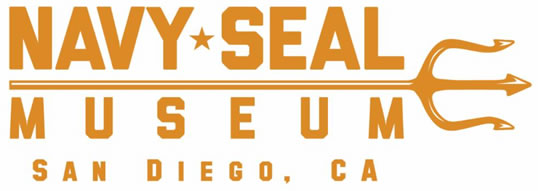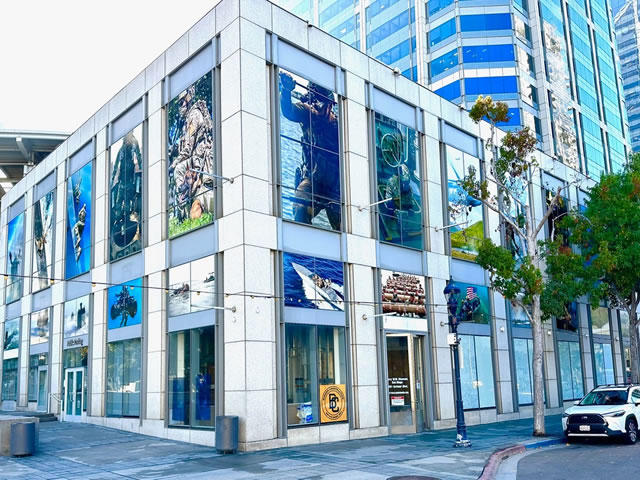Monthly News and Intel | June 2025

A Message from Our Executive Director
Dear Friends of the Museum,
As summer approaches, the Navy SEAL Museum is in full swing.
Make the Museum part of your summer plans. Looking to beat the Florida heat? Step inside and explore the extraordinary legacy of America’s elite warriors. Perfect for families, our exhibits offer an educational and inspiring experience for visitors of all ages. Located on the scenic beaches of Hutchinson Island, the Navy SEAL Museum is more than a museum—it is a destination.
Each month, the Museum hosts a Dogs of the K9 Project event. This experience is fun for all ages and is included with your paid admission. Experience the Museum’s K9 Project firsthand and discover the powerful connection between Special Operators and their dogs.
I would also like to sincerely thank all who attended our annual Memorial Day Ceremony on Monday, May 26, at the Museum’s Memorial Wall. Each year, we gather to reflect on this solemn day with gratitude and in honor of those who have made the ultimate sacrifice for our country and our freedom. This year’s ceremony was no exception. At the Navy SEAL Museum, we preserve their legacy, tell their stories, and ensure they are never forgotten. It was an honor to have you with us for this moving tribute.
The Museum continues to offer a dynamic schedule of events throughout the summer. I hope you will consider joining us in Chicago on June 20 and 21 for Two Evenings of Valor, Together for Trident House Charities.
I would also like to thank our dedicated Host Committee members for warmly welcoming the Museum back to the Windy City. Thank you for helping us connect with a new audience of patriots each year. Your commitment and generosity to our community are inspiring.
Our momentum continues this fall with the Navy SEAL Museum’s 40th Annual Muster, taking place November 7–8, 2025. Mark your calendar and plan to join us for this milestone event.
As we welcome the summer months, I want to thank each of you for your continued support and enthusiasm for the Navy SEAL Museum. You make our mission possible—and on behalf of the entire Navy SEAL Museum team, we are deeply grateful.
With gratitude,
Master Chief Ken Corona, USN (Retired)
Executive Director, Navy SEAL Museum
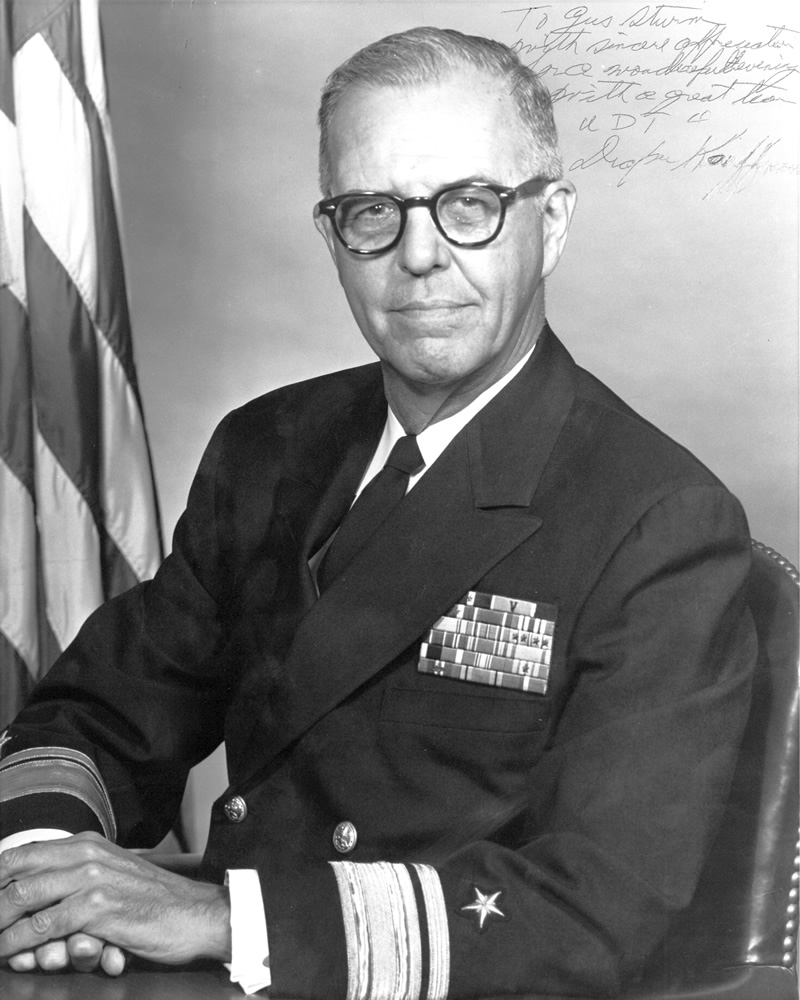
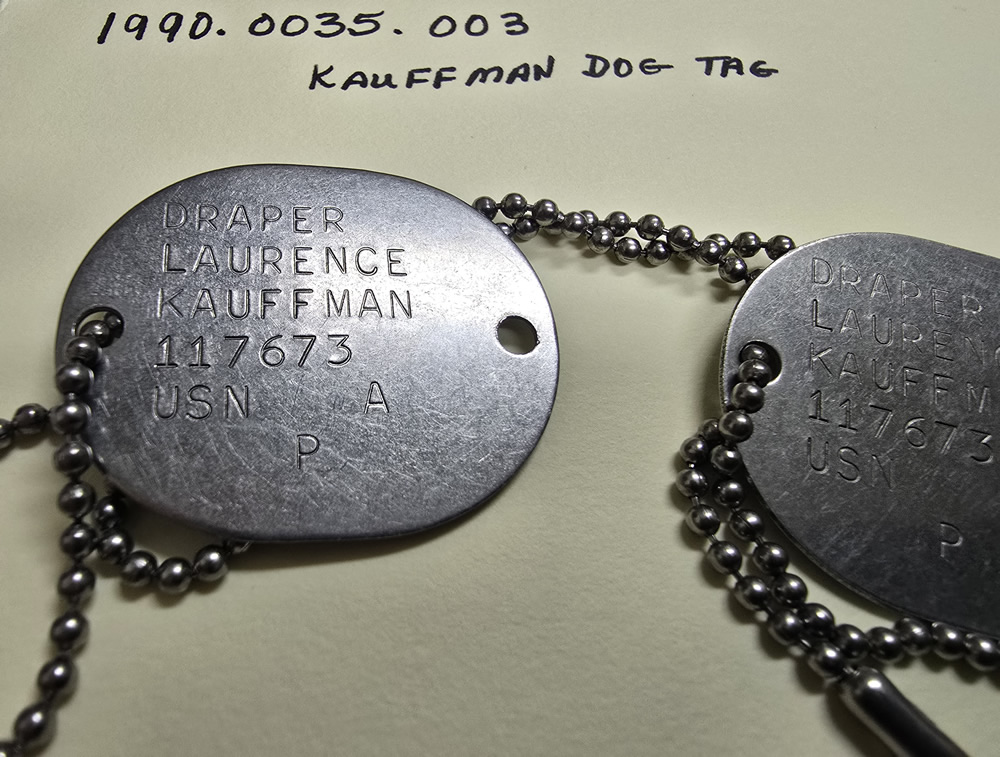
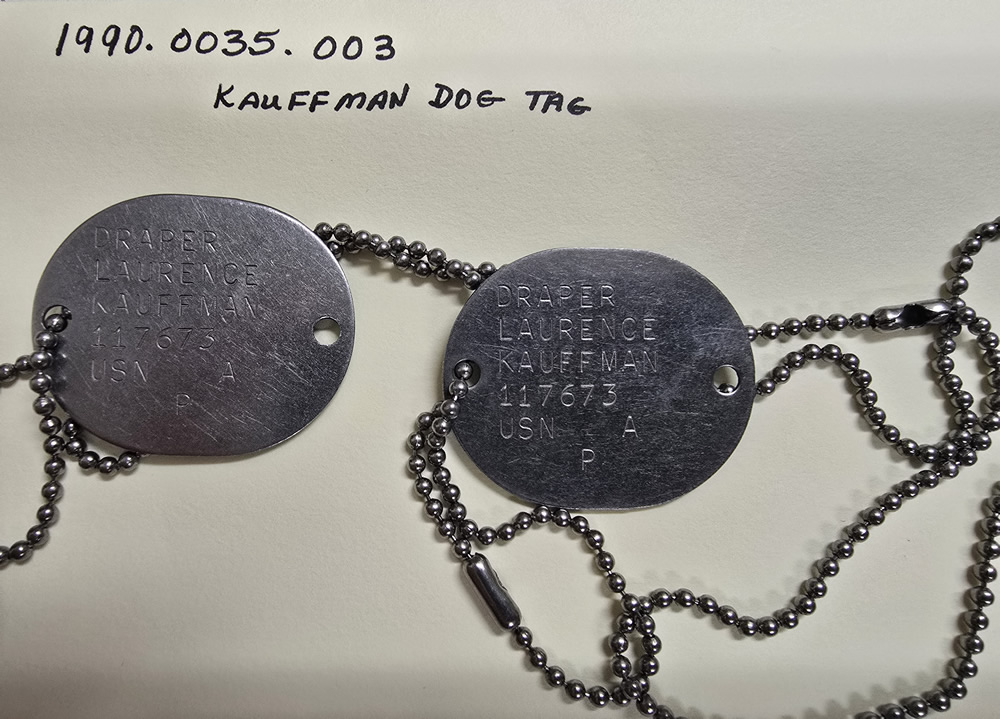
Artifact of the Month
The Dog Tags of Draper L. Kauffman:
Father of Naval Special Warfare
The Dog Tags of Draper L. Kauffman: Father of Naval Special Warfare
In the National Navy UDT-SEAL Museum’s Archive Room, a set of dog tags rests, two small, battered pieces of stamped metal sitting quietly within an envelope along with their chain. To the untrained eye, they are little more than military-issued identification. But to those who know the name “Draper Laurence Kauffman,” these tags are relics of origin, keys to the legacy of the United States Navy’s most elite warriors.
Draper Kauffman was no ordinary naval officer. Born into a prominent Navy family in 1911, his father, Admiral James L. Kauffman, was Commander of the U.S. Naval Reserve Force. Young Draper’s path seemed predestined. But history has a way of testing heroes before it crowns them. When Kauffman graduated from the U.S. Naval Academy in 1933, he was denied a commission due to poor eyesight, a bureaucratic blow that would have ended most naval dreams cold.
Instead, Kauffman took to the world stage as a civilian, joining the American Volunteer Ambulance Corps in France at the onset of World War II. He was captured by the Germans during the fall of France in 1940 and spent several harrowing months in a prison camp before being released. Returning to the U.S. as war loomed, Kauffman found a new path back into Navy service not through the bridge of a ship, but through the wire of a bomb.
By 1941, Kauffman was commissioned into the U.S. Naval Reserve and assigned to develop the Navy’s Bomb Disposal School. Drawing upon British techniques and training with the Royal Navy in London during the Blitz, he helped establish the U.S. Navy Bomb Disposal School in Washington, D.C., one of the first of its kind in the United States. Kauffman wasn’t just training men to face explosives; he was shaping the philosophy of courage under pressure, precision under chaos.
In 1943, as Allied planners prepared for amphibious assaults across Nazi-occupied Europe and the Pacific, Kauffman was called upon to innovate again. This time, he was tasked with forming a new kind of unit, one that would clear beach obstacles under direct enemy fire. These were the Naval Combat Demolition Units, also known as NCDUs. Trained in secret and deployed in silence, these frogmen armed with explosive charges, rubber boats, and little else would be the tip of the spear for the D-Day invasion.
The dog tags now housed in the museum hung around Kauffman’s neck during this critical chapter of the war. They accompanied him to Fort Pierce, Florida, where he established the Naval Amphibious Training Base, training men for sabotage, demolition, and survival on the world’s deadliest shores. They were with him in 1944 when he led NCDU training at Camp Peary and when his units were deployed to Omaha and Utah Beaches.
On June 6, 1944, D-Day, the NCDUs suffered staggering losses. At Omaha Beach alone, nearly 50% of the men in the demolition teams were killed or wounded. But their mission succeeded. The obstacles were cleared. The invasion moved forward. And Draper Kauffman’s vision was vindicated in blood and bravery.
Yet the essence of his legacy was born in those early years, etched into steel, tethered around his neck, forged by fire and saltwater. These dog tags are not merely identifiers. They are artifacts of inception. They mark the man who taught warriors to swim with explosives, to charge into surf zones bristling with mines and traps, to act without hesitation when failure meant death.
Today, the Navy SEALs trace their lineage directly to Kauffman’s NCDUs and UDTs. The ethos of the “Quiet Professional,” the emphasis on extreme mental and physical conditioning, and the fearless approach to unconventional warfare all flow from the foundation he laid. Without Kauffman, there are no frogmen. No demolition teams. No SEALs.
When visitors peer into the exhibit case, they might see two plain pieces of metal, but what they’re seeing is the genesis of Naval Special Warfare. Draper Kauffman’s dog tags represent the birth certificate of a legacy that continues to shape American military operations worldwide.
They are a reminder: greatness doesn’t always begin with glory. Sometimes it begins with rejection, captivity, or perseverance. And sometimes, it hangs quietly on a chain, waiting to tell its story.
_____________________________________________________
1 Kevin Dockery, Navy SEALs: The Complete History, (New York: Berkley Caliber, 2004), 17.
2 William H. McRaven, Spec Ops: Case Studies in Special Operations Warfare, (New York: Presidio Press, 1996), 14
3 Department of the Navy, The History of Navy Explosive Ordnance Disposal, accessed June 4, 2025, https://www.history.navy.mil/browse-by-topic/communities/explosive-ordnance-disposal.html
4 United States Navy, Combat Demolition Units Report: Operation Neptune, Naval Historical Center Archives, accessed June 4, 2025, https://www.history.navy.mil/research/library/online-reading-room/title-list-alphabetically/d/d-day-the-normandy-invasion-combat-demolition-units.html
5 National Navy UDT-SEAL Museum, “SEAL History: Origins of Naval Special Warfare-WWII, accessed June 4, 2025, https://www.navysealmuseum.org/naval-special-warfare/seal-history-origins-of-naval-special-warfare-wwii
6 Ibid

Artifact of the Month
The Dog Tags of Draper L. Kauffman:
Father of Naval Special Warfare
The Dog Tags of Draper L. Kauffman: Father of Naval Special Warfare
In the National Navy UDT-SEAL Museum’s Archive Room, a set of dog tags rests, two small, battered pieces of stamped metal sitting quietly within an envelope along with their chain. To the untrained eye, they are little more than military-issued identification. But to those who know the name “Draper Laurence Kauffman,” these tags are relics of origin, keys to the legacy of the United States Navy’s most elite warriors.
Draper Kauffman was no ordinary naval officer. Born into a prominent Navy family in 1911, his father, Admiral James L. Kauffman, was Commander of the U.S. Naval Reserve Force. Young Draper’s path seemed predestined. But history has a way of testing heroes before it crowns them. When Kauffman graduated from the U.S. Naval Academy in 1933, he was denied a commission due to poor eyesight, a bureaucratic blow that would have ended most naval dreams cold.
Instead, Kauffman took to the world stage as a civilian, joining the American Volunteer Ambulance Corps in France at the onset of World War II. He was captured by the Germans during the fall of France in 1940 and spent several harrowing months in a prison camp before being released. Returning to the U.S. as war loomed, Kauffman found a new path back into Navy service not through the bridge of a ship, but through the wire of a bomb.
By 1941, Kauffman was commissioned into the U.S. Naval Reserve and assigned to develop the Navy’s Bomb Disposal School. Drawing upon British techniques and training with the Royal Navy in London during the Blitz, he helped establish the U.S. Navy Bomb Disposal School in Washington, D.C., one of the first of its kind in the United States. Kauffman wasn’t just training men to face explosives; he was shaping the philosophy of courage under pressure, precision under chaos.
In 1943, as Allied planners prepared for amphibious assaults across Nazi-occupied Europe and the Pacific, Kauffman was called upon to innovate again. This time, he was tasked with forming a new kind of unit, one that would clear beach obstacles under direct enemy fire. These were the Naval Combat Demolition Units, also known as NCDUs. Trained in secret and deployed in silence, these frogmen armed with explosive charges, rubber boats, and little else would be the tip of the spear for the D-Day invasion.
The dog tags now housed in the museum hung around Kauffman’s neck during this critical chapter of the war. They accompanied him to Fort Pierce, Florida, where he established the Naval Amphibious Training Base, training men for sabotage, demolition, and survival on the world’s deadliest shores. They were with him in 1944 when he led NCDU training at Camp Peary and when his units were deployed to Omaha and Utah Beaches.
On June 6, 1944, D-Day, the NCDUs suffered staggering losses. At Omaha Beach alone, nearly 50% of the men in the demolition teams were killed or wounded. But their mission succeeded. The obstacles were cleared. The invasion moved forward. And Draper Kauffman’s vision was vindicated in blood and bravery.
Yet the essence of his legacy was born in those early years, etched into steel, tethered around his neck, forged by fire and saltwater. These dog tags are not merely identifiers. They are artifacts of inception. They mark the man who taught warriors to swim with explosives, to charge into surf zones bristling with mines and traps, to act without hesitation when failure meant death.
Today, the Navy SEALs trace their lineage directly to Kauffman’s NCDUs and UDTs. The ethos of the “Quiet Professional,” the emphasis on extreme mental and physical conditioning, and the fearless approach to unconventional warfare all flow from the foundation he laid. Without Kauffman, there are no frogmen. No demolition teams. No SEALs.
When visitors peer into the exhibit case, they might see two plain pieces of metal, but what they’re seeing is the genesis of Naval Special Warfare. Draper Kauffman’s dog tags represent the birth certificate of a legacy that continues to shape American military operations worldwide.
They are a reminder: greatness doesn’t always begin with glory. Sometimes it begins with rejection, captivity, or perseverance. And sometimes, it hangs quietly on a chain, waiting to tell its story.
_____________________________________________________
1 Kevin Dockery, Navy SEALs: The Complete History, (New York: Berkley Caliber, 2004), 17.
2 William H. McRaven, Spec Ops: Case Studies in Special Operations Warfare, (New York: Presidio Press, 1996), 14
3 Department of the Navy, The History of Navy Explosive Ordnance Disposal, accessed June 4, 2025, https://www.history.navy.mil/browse-by-topic/communities/explosive-ordnance-disposal.html
4 United States Navy, Combat Demolition Units Report: Operation Neptune, Naval Historical Center Archives, accessed June 4, 2025, https://www.history.navy.mil/research/library/online-reading-room/title-list-alphabetically/d/d-day-the-normandy-invasion-combat-demolition-units.html
5 National Navy UDT-SEAL Museum, “SEAL History: Origins of Naval Special Warfare-WWII, accessed June 4, 2025, https://www.navysealmuseum.org/naval-special-warfare/seal-history-origins-of-naval-special-warfare-wwii
6 Ibid


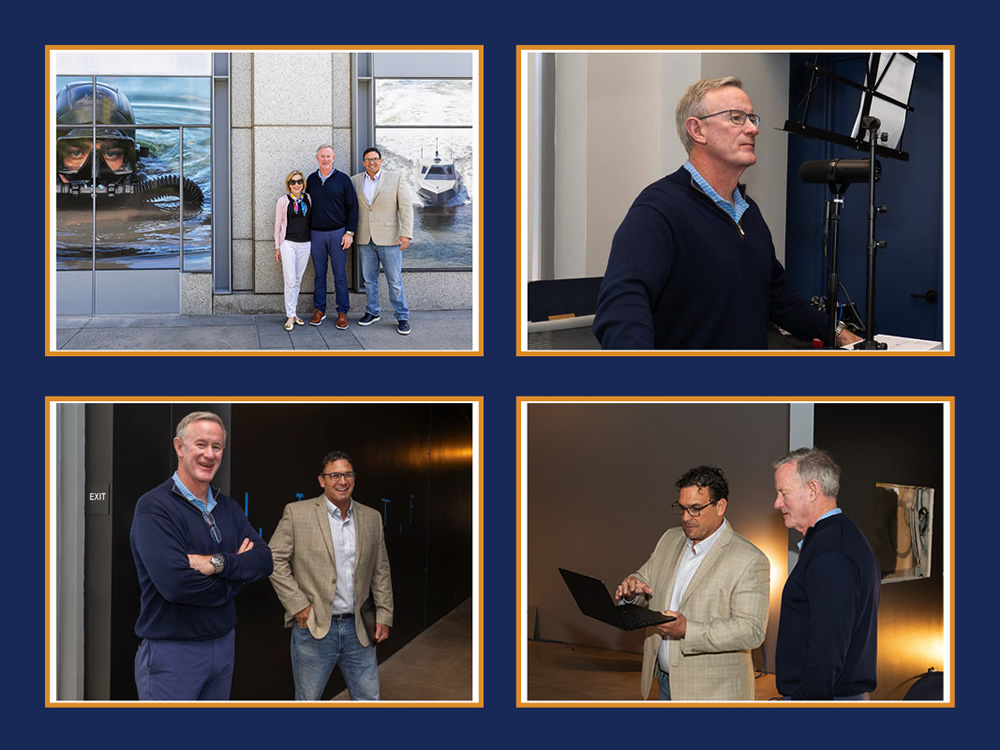
ADM William McRaven, USN (Ret.) Stops By to Visit the Showcase
“If you can’t do the little things right, you will never do the big things right.” – Adm. McRaven’s Commencement Speech to University of Texas, 2014.
The Navy SEAL Museum San Diego (NSMSD) was honored to welcome Admiral William McRaven (Ret.) and his wife, Georgeann, to the Kettner Blvd. location.
Brian “Beef” Drechsler, Executive Director of the Navy SEAL Museum San Diego, provided the Admiral and Georgeann with a personal tour of the Showcase Museum, shared our vision for the future, including our plan for an expanded Museum to adequately tell the story of Naval Special Warfare. During the visit, Admiral McRaven also recorded narration for a signature exhibition feature.
At NSMSD, visitors will hear from former SEALs themselves throughout the entire Museum learning and experiencing their stories, and Admiral McRaven’s is just one of many. As we approach the October 4 opening of our Showcase, we take a moment to appreciate the magnitude of the endeavor before us and what a humbling honor it is to host individuals like Admiral McRaven—a pillar of leadership and guiding force within the Naval Special Warfare community—and a respected liaison of the legacy of these elite warriors.
Once open, Navy SEAL Museum San Diego’s Showcase Exhibition will be able to host thousands of visitors each year. But this is not where we stop. In fact, it’s where we begin.
The Showcase Museum at 1001 Kettner Blvd. is our first Museum, not the final Museum. Our goal is a space far in excess of our current footprint of 10,000 sq. ft where we can adequately impart the magnitude of NSW history, and be able to host solemn events, change of command ceremonies, weddings, and more. But, as paraphrased from ADM McRaven above, one must be able to do the little things first, and this is what just what we’re doing.
This Showcase Museum is our proof of concept—a way to immediately start delivering public benefit through education and unique experiences, testing exhibits and processes, generating revenue, and most importantly, inspiring visitors to serve something bigger than themselves.
Join the mission and stay in touch as we build a larger platform with which to tell the full story of Navy SEALs and their predecessors.
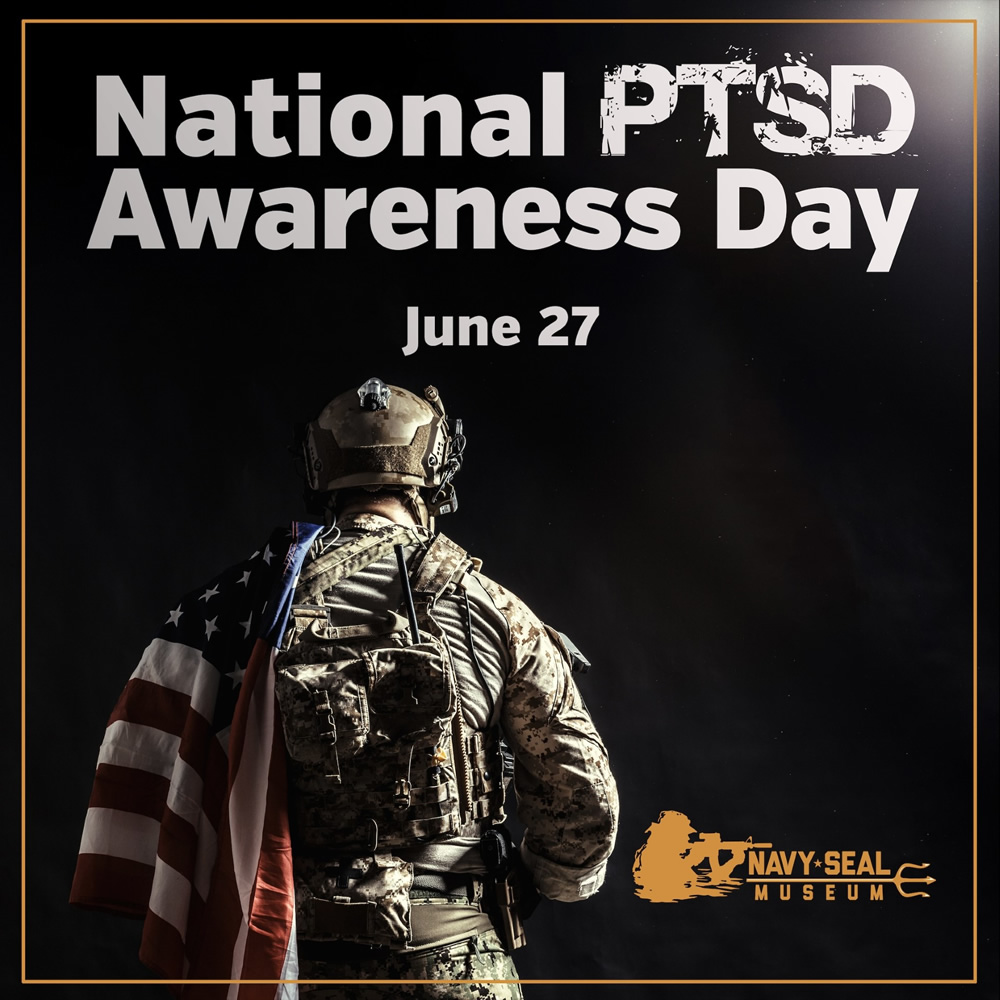
June 27 is PTSD Awareness Day
At the National Navy SEAL Museum, we understand and recognize the importance of bringing awareness to the realities of Post-Traumatic Stress Disorder (PTSD).
National PTSD Awareness Day serves as an important reminder of the invisible wounds carried by so many who have served. For operators, the sacrifice continues long after the battlefield.
In the U.S. Navy SEAL community—and the military community at large—PTSD is an important topic, one that often goes undiscussed. PTSD does not discriminate.
Even the most elite operators can be affected by exposure to trauma. It can impact all ranks and occupational specialties.
U.S. Navy SEALs are known for their physical fitness, held to some of the highest standards. But mental fitness must not be overlooked—addressing mental health is just as critical.
It is crucial to break down the stigmas that surround Post-Traumatic Stress Disorder (PTSD), to encourage discussion, and to ensure that no one is afraid to seek help.
The National Navy SEAL Museum remains committed to the Special Operations community through preserving the history and heritage of the Navy SEALs and their predecessors, honoring our fallen on the black granite walls of the Navy SEAL Memorial, and caring for Special Operators and their families through the four branches of our Trident House Charities Program. Please join us in raising awareness—not just on June 27, but every day.
Stay tuned for more information as we observe National PTSD Awareness Day.

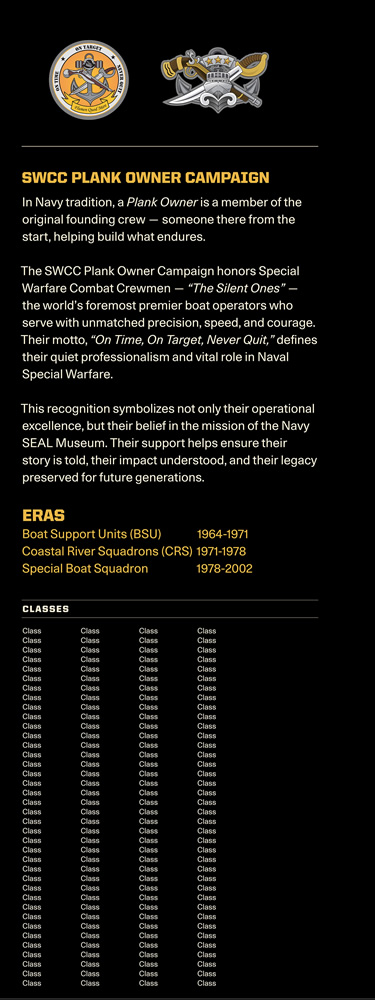
The Special Warfare Combat Crewman (SWCC) Plank Owner Campaign Is Underway
There is a lethal maritime force that operates throughout the world and they are as essential to Naval Special Warfare as the SEAL Teams. They are known for their expertise in special waterborne operations.
They can levy heavy fire support, conduct quick and stealthy reconnaissance, and provide infil and exfil operations in ocean or riverine environments. They are SWCC, the Special Warfare Combat Crewman, or as they refer to themselves, “Damn Boat Guys/Gals” (DBG).
Every DBG can play a role in sharing the SWCC story while helping to build the Navy SEAL Museum in San Diego through the SWCC Plank Owner Campaign.
We invite you to join us with this distinct opportunity to be part of a legacy that will motivate and inspire generations of Americans for years to come.
The campaign launched 2 JUN 2025 and we are accepting donations from DBGs, their families, and their friends to help with the build-out of the Museum and installing a larger-than-life SWCC Plank Owner Plaque next to the exhibit on SWCC history.
Your gift, no matter the size, will be added to the total goal for your specific Era or SWCC Class.
The goal for an Era is $5,000 and SWCC Class is $1,000.
Please reach out to any SWCC Teammates, get your friends and families involved, and help SWCC tell their story inside the Navy SEAL Museum San Diego.

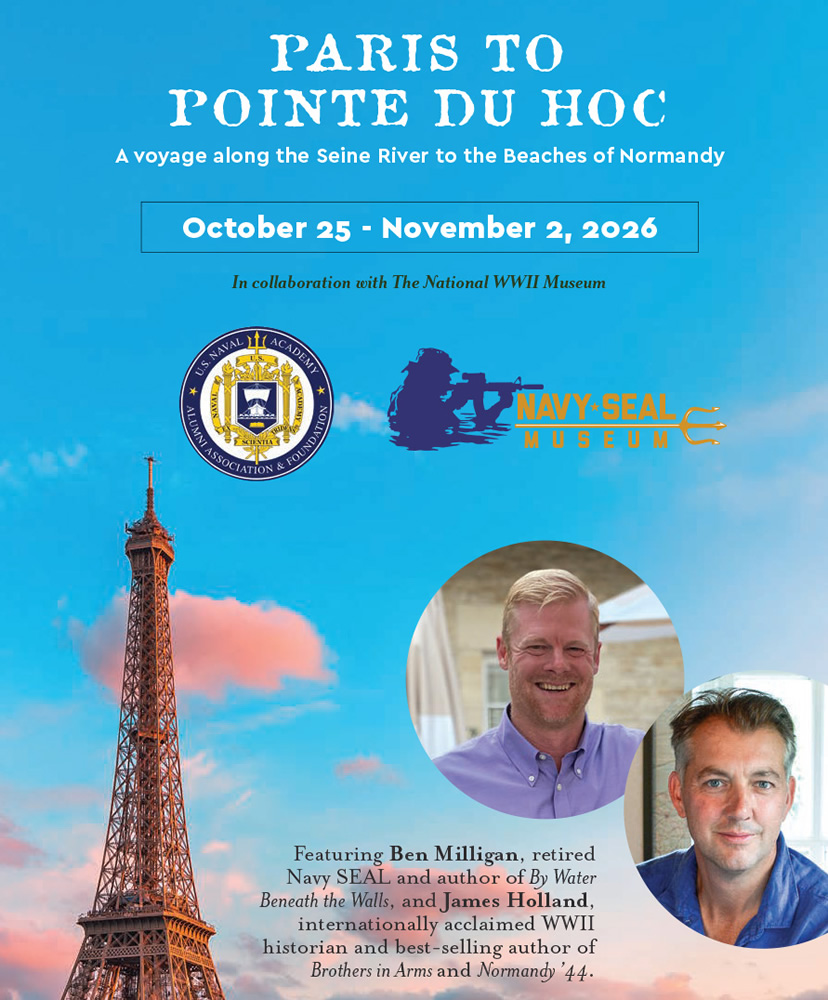
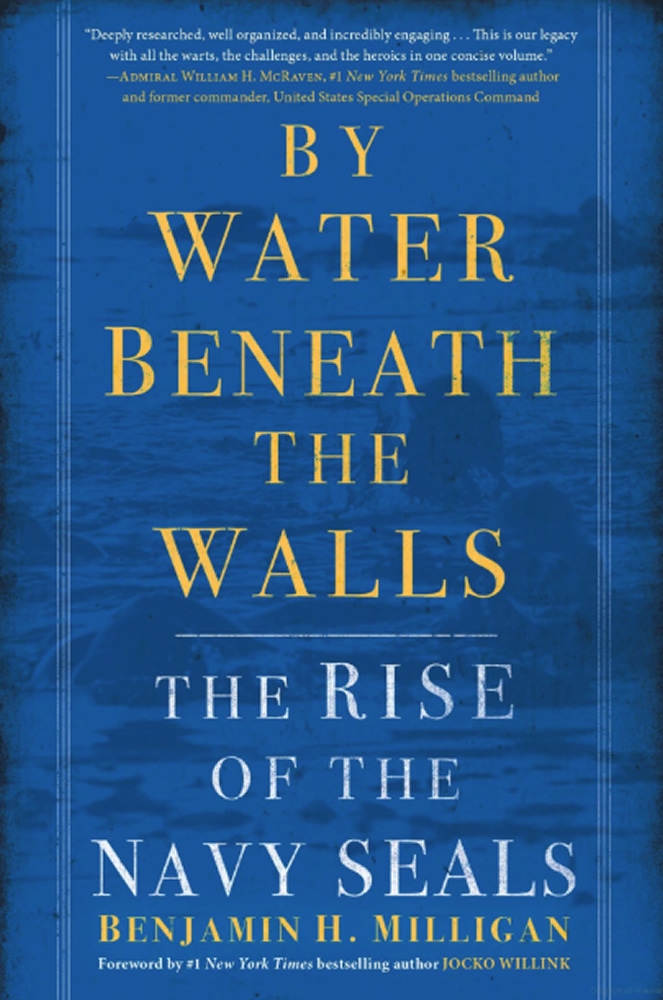
World War II Museum Travel
It is said that to learn the history of Naval Special Warfare, you have to start with Normandy. Now, what if you were able to learn all about Naval Special Warfare history, in Normandy and with the guy who quite literally wrote the book on NSW history? 🤯
Sound too good to be true? It’s not.
Navy SEAL Museum, in collaboration with Alumni Travel, The National WWII Museum, Ben Milligan, former SEAL and author of By Water Beneath the Walls, and James Holland, author of Brothers in Arms and Normandy ’44, brings you an opportunity to voyage along the Seine River to the beaches of Normandy, adrift in history and heritage.
The fearsome reputation of today’s Navy SEALs is inextricably linked to the groundbreaking, often perilous, work of their combat diver predecessors: the Naval Combat Demolition Units (NCDUs) and Underwater Demolition Teams (UDTs). These pioneering units, forged in the crucible of World War II, laid the foundation for the SEAL ethos and specialized skill set.
The NCDUs, formed on the beaches of Ft. Pierce, Florida in 1943, were initially tasked with clearing obstacles from invasion beaches. Their bravery under fire during the Normandy landings, where they faced intense enemy resistance while destroying German defenses, was legendary. These early frogmen, armed with explosives and sheer grit, literally cleared the path for Allied forces, often at immense personal cost.
Aside from the ever-changing scenery, the trip will feature full-time historians, local guides, four nights’ stay in a 5-star chateau, delectable dining options, and more.

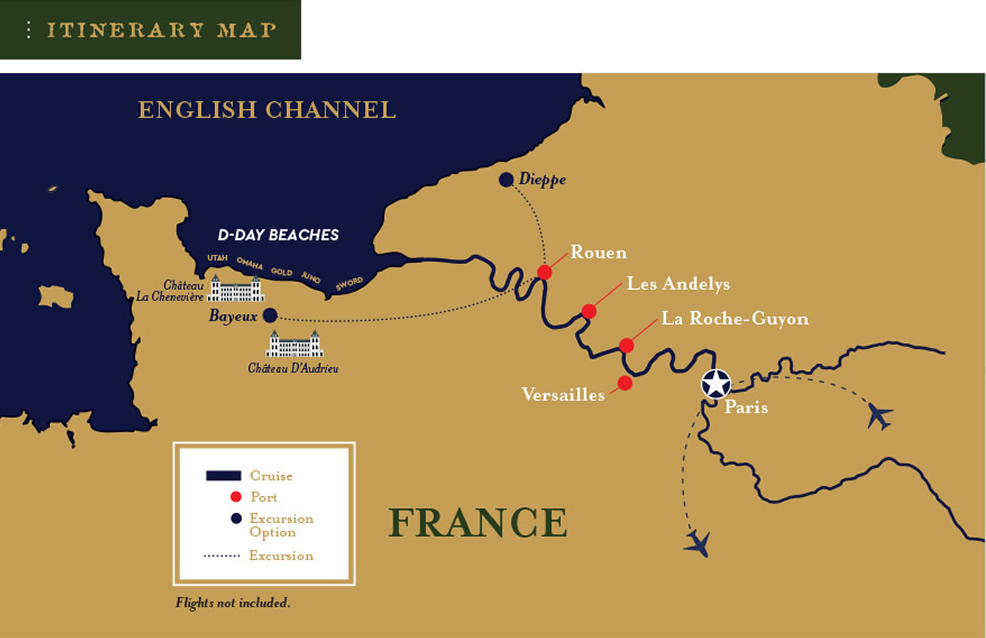
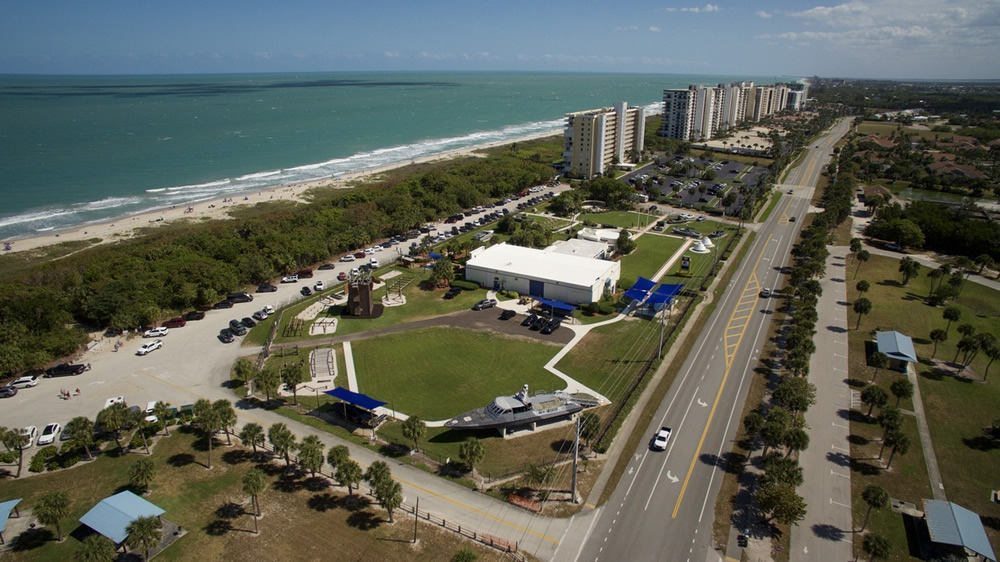
BOGO Admission for Locals Only Summer 2025
This summer, we’re honoring our local community with a special Buy One, Get One Free Admission offer, Tuesday through Friday, at the Navy SEAL Museum in Fort Pierce.
Treasure Coast residents (St. Lucie, Martin, and Indian River Counties) will enjoy a BOGO general admission ticket when they visit the Museum weekdays only, beginning June 1 through September 30, 2025.
In partnership with Visit St. Lucie County, the Navy SEAL Museum is proud to extend this offer to our locals.
Valid Tuesday–Friday only (the Museum is closed on Mondays)
Visitors must show proof of local residency with a driver’s license or utility bill.
Offer valid for general adult admission. Discount will extend to the ticket of equal of lesser value of general admission adult purchase.
No blackout dates, unless otherwise posted on our website.
Cannot be combined with other offers.
Mention promo code LOCALS2025 at front desk upon entry.
Stay engaged this summer! Explore history and honor the legacy at the Navy SEAL Museum in Fort Pierce.
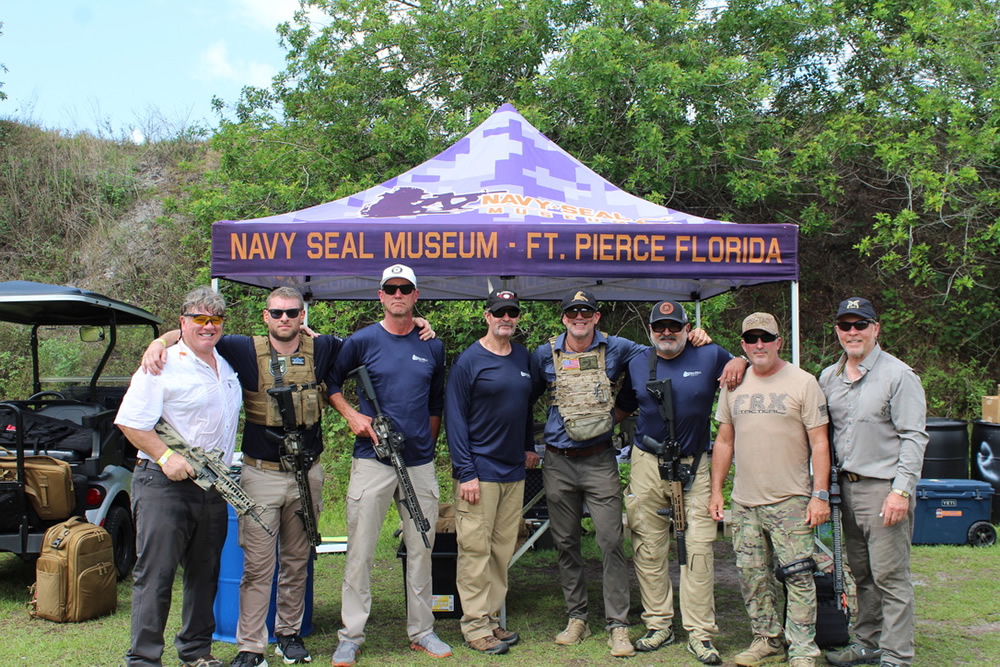
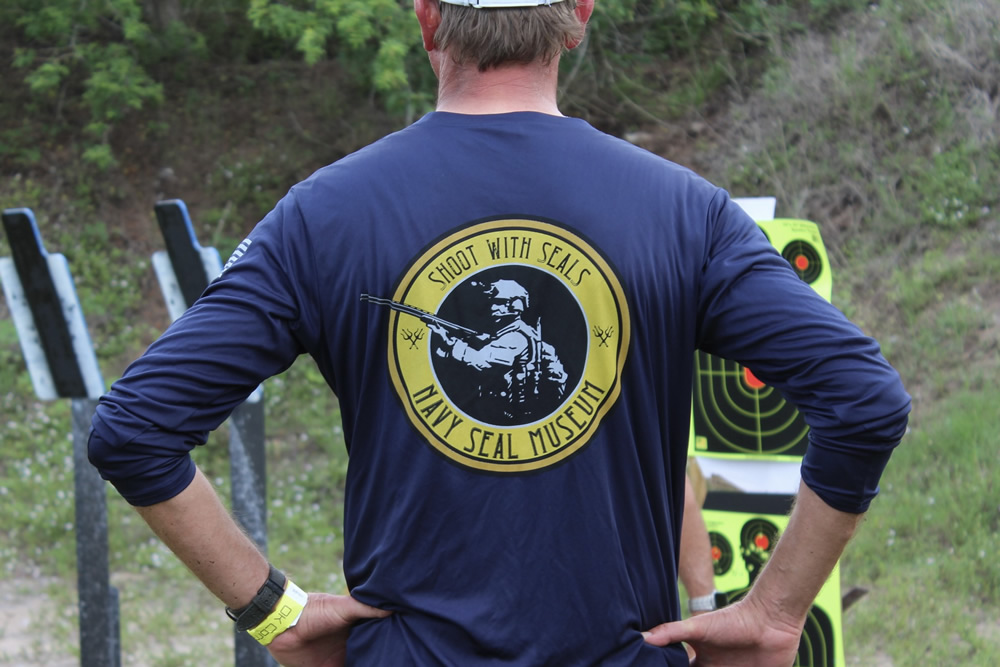
Shoot with the SEALs
The Museum hosted another successful Shoot with the SEALs event. Our group enjoyed an action-packed experience at the OK Corral Gun Club in Okeechobee, Florida.
Participants received personalized instruction from experienced Navy SEALs, gaining insight into their unparalleled expertise in firearms and tactical training.
Attendees enjoyed a day of camaraderie, shared experiences on the range, and left with sharpened skills and lasting memories. We extend our gratitude to these supporters from our Navy SEALs Take on Cincinnati event for their ongoing friendship and partnership.
The Museum thanks all of our participants for a wonderful experience on the range. Your participation and support enable the Museum to continue its mission, and we are truly grateful.
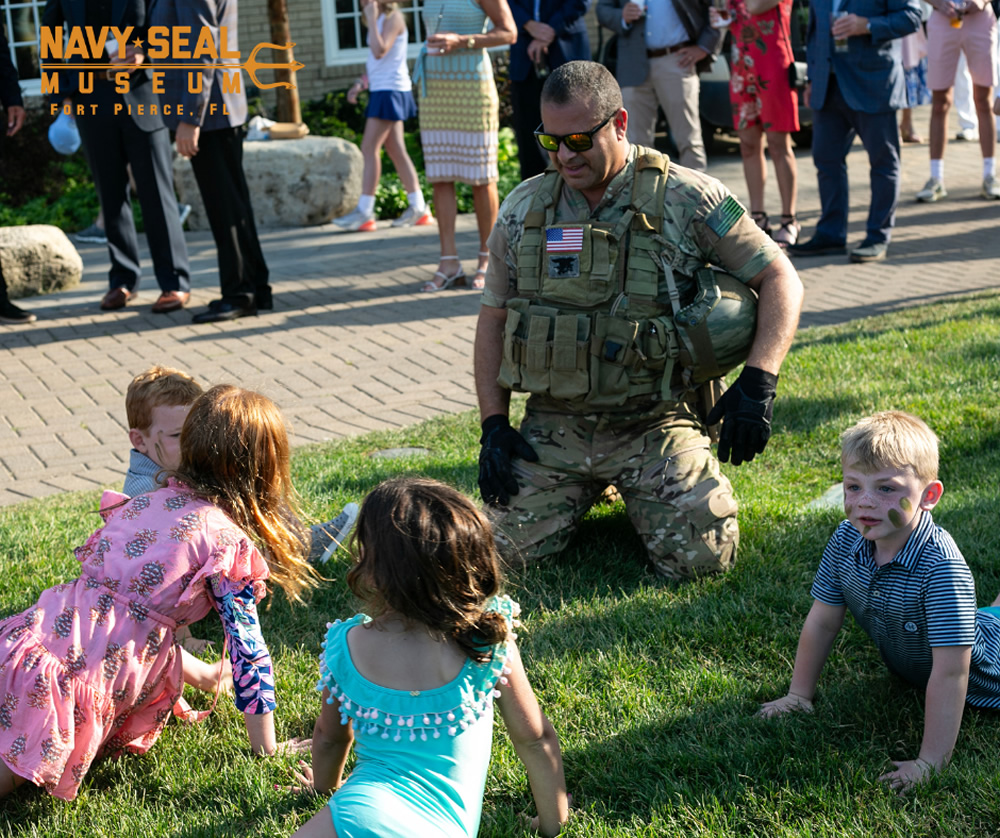
Two Evenings of Valor, Together for Trident House Charities
Join the Navy SEAL Museum in the Windy City on June 20 and 21 for Two Evenings of Valor, Together for Trident House Charities. Your support of this event directly benefits the Museum and its Trident House Charities Program.
Support the mission of the National Navy SEAL Museum while enjoying two unforgettable evenings featuring inspiring speakers, engaging panel discussions, a live tactical demonstration, elegant dinners, and exclusive auctions.
Don’t miss an exceptional weekend honoring our nation’s heroes. Reserve your seat today.
With Gratitude to Our Host Committee
Linda and Peter Arts
Sheila and Jim Clary
Patty and Peter Garvy
Sandy and Gary Fencik
Silvia and Steve Fitzgerald
Anna and Bill Kelly
Linda and Ted Neely
Marla and Mitch Wilneff
Visit our event page to reserve your seat, become a sponsor, or make a donation.
Anytime is the right time to give the gift of NSW History!
Do you have a history buff in your household? Do you have a current or former NSW operator in your life?
Did you know that Navy SEAL Museum’s photo archives are online to view and available for sale?
Check out our online library and search key words to find the right image for you or a loved one.
Digitization of NSM’s archive was made possible by a generous grant from The Navy SEAL Foundation.

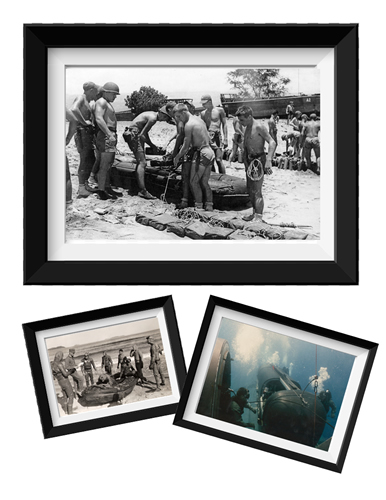

Anytime is the right time to give the gift of NSW History!
Do you have a history buff in your household? Do you have a current or former NSW operator in your life?
Did you know that Navy SEAL Museum’s photo archives are online to view and available for sale?
Check out our online library and search key words to find the right image for you or a loved one.
Digitization of NSM’s archive was made possible by a generous grant from The Navy SEAL Foundation.

FOLLOW US ON SOCIAL MEDIA


